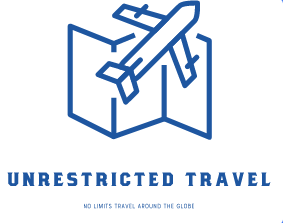While many people are opting for shorter vacations, those who are traveling to Africa should keep in mind some travel news. There have been several outbreaks of Covid, a variant of the H1N1 virus. The European Union and the U.S. have both tightened their border restrictions to prevent the spread of the disease. But despite the threats of the new strain, the industry is booming. The continued outbreaks of the disease are encouraging travelers to consider different destinations.

The vaccination rate has gone up to almost a decade’s high. The high numbers coincide with peak European travel seasons. While the world is facing tough times, the Middle East is a region that benefits most from the tourism upswing. A study conducted by Skift found that the region’s vaccination rates are at an all-time high, with several countries reporting record numbers for the first time. Nonetheless, the industry remains optimistic, noting that the global economic recovery will boost the travel industry in the coming years.
Vaccination rates are still high in the Middle East, which is one of the largest sources of travelers. This is good news for the region as it means that the industry is hopeful that the tourism recovery will begin sooner rather than later. Fortunately, the recovery in the Middle East is also boosting the tourism industry. It is still the most untapped region, and the best way to see it is by booking your next trip. But the question remains: how will the global economy cope with the vaccination rates of travelers in this region?
The travel industry is predicting a slow-but-steady rebound from the recent economic crisis. Across the globe, the world’s largest source of visitors is Europe. As a result, this region is expected to see the fastest and highest travel upswing in the next decade. The recovery in the Middle East will provide a major boost for the region’s tourism industry, which has been suffering since the financial collapse in 2008. While there is no guarantee that the economy will continue to grow in this way, it’s encouraging news nonetheless.
In the Middle East, the recent outbreak of the virus has caused significant disruption in the tour operator industry. In Europe, the number of travelers is decreasing, and the country’s tourist industry is also experiencing a slump. But the good news is that the region is still experiencing the upswing in tourism, and that it is likely to last for years. The only thing stopping the recovery is how the economy is doing in the Middle East, mainly due to the AIDS-related deaths.
The Middle East has a high-risk of contracting the disease, but it’s worth it. Luckily, the region is not affected as much as other parts of the world. In fact, it’s seen the greatest growth in tourism in the past decade in the Middle East. The region is also one of the few regions that has seen an upswing in its tourism industry. In addition to the rise in travel, the epidemic is also affecting tourism in the Middle East. In the UK, the EU’s COVID-19 laws have compounded the effects on the tour operators.
In Europe, a recent study has shown that vaccination rates in the Middle East are at an all-time high. However, these vaccination rates have coincided with peak travel seasons in Europe. In North America, the country has been the most open, which has helped the tourism industry recover the most rapidly. In southern Africa, the vaccine rate has been very low, but there have been some reports of cases of infection among tourists in the region. Thankfully, the recovery of the tourism industry in the Middle East has been slow.
The Middle East is one of the most open places in the world to visit. Despite the heightened risks of the disease, many travelers are still eager to travel to the Middle East. Its high vaccination rates make the region the fastest to recover in the global economy. But if the trend continues, the travel industry is optimistic that tourists will soon return. The recovery in the Middle East is also accelerating in North America. The World Health Organization has labeled omicron as a potential threat to the tourism sector.





